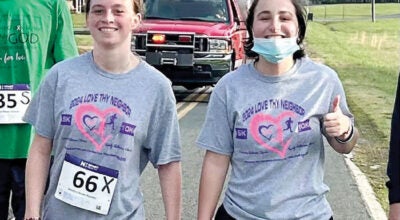Ester Marsh: Rotator cuff exercises for healthy shoulders
Published 12:00 am Saturday, March 2, 2024
A few weeks ago, I had my check up with Dr. Ginn about my right shoulder where I had the ganglion cyst, bone spur and calcifications on the rotator cuff. After he drained it and put cortisone in it, it’s actually doing really well. However, my left shoulder has been bad for years. I asked if he could check it and they took x-rays and the joint itself looks good. To find out the soft tissue, tendons and ligaments, I would need an MRI. Most likely I might have some tears and/or tendinitis. I chose to do a cortisone injection first, and so far, thankfully doing very well! I must say, I also do specific exercises for a healthy rotator cuff and shoulder and am staying away from pressing heavy weight over my shoulders. I don’t want to mess up these good-feeling shoulders!
What is the rotator cuff? The rotator cuff is actually made up with four muscles: Subscapularis, Supraspinatus, Infraspinatus and the Teres Minor.
Many people suffer with rotator cuff issues. As Dr. Ginn said, he sees this a lot in older people, especially active older people. Individuals can have rotator cuff tears and have no symptoms. Some may have weakness and/or atrophy (loss of muscle). A full tear typically presents itself where the person cannot move that arm at all, or very limited motion. An MRI would be able to show tears and other soft tissue challenges. The first steps of rotator cuff treatment include:
• Physical therapy. It’s the most important step in the treatment of a rotator cuff injury. It’s amazing how much people (speaking from personal experience) benefit from physical therapy period.
• Anti-inflammatory medications. Medications are very helpful controlling the symptoms of a tear.
• Cortisone injections. They can be extremely helpful at limiting the acute inflammation so you can start your therapy and exercises. They have been a lifesaver for me at this time.
So which kind of exercises are the best?
• Internal rotation: With your knees bent, lie on a firm surface. Bend that arm to a right angle (90 degrees). Rest your elbow on the floor. Keeping the elbow next to your side, lower the forearm toward the floor, away from the body (keep the 90 degree angle). Slowly return your forearm to your side. Repeat 10 to 15 times using a light weight. Do both sides even if the other side does not have any problems.
• External rotation: Depending on the severity of your injury, you might only be able to do this exercise on your injured side due to the fact that you are lying on your side. Lie on your uninjured side with a pillow supporting your head. Place a small rolled up towel under the elbow which is on top. Bend that arm to a right angle (again 90 degrees) resting the forearm on your stomach. Keeping the elbow against the towel, slowly lift a small weight until your forearm is slightly higher than your elbow. Return to starting position. Repeat 10 to 15 times.
Especially if you can’t lie on your side you can stand in a door frame with your arm at 90 degrees and “push’’ outward against the frame. I have added this one to my routine as it seems to work very well for my shoulders. Hold for about 10 seconds. I do it about 3 times.
• “Rear” d-bell raises: In a standing position, start with your right arm between the front and the side of your body, thumb down. For balance you might have to raise the left arm slightly to the front. Raise your right arm about 45 degrees to the back. Do not lift beyond the point of pain. Slowly lower your arm (make sure you are not swinging your arm). Repeat the exercise about 10-15 times. Change sides. We have a fabulous rear delt machine I love, where you sit facing the machine and both arms move back pressing a handle..
Before you start these exercises, make sure your doctor or physical therapist is aware of you doing them. There are a lot more fabulous exercises for a healthy rotator cuff. And, if you end up having surgery, it will not be the end of the world, especially when you have done all the steps leading up to it. We are very fortunate to have Dr. Ginn in our community. My goal is not to have surgery if I can help it. I don’t have time for it!
Ester H. Marsh is director of healthy living of the J.F. Hurley Family YMCA.



